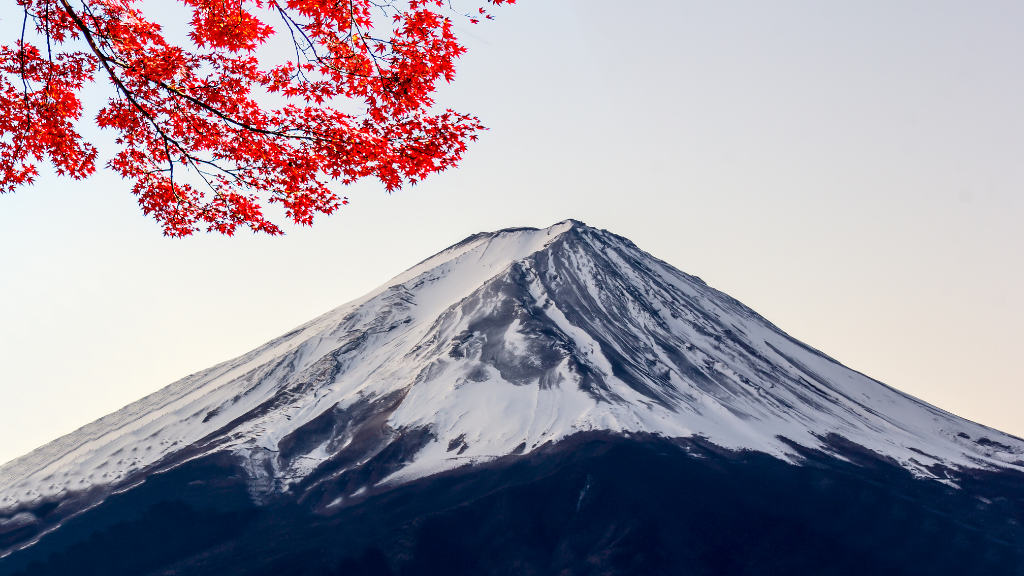Japan in Spring vs Autumn: Which Season Should You Choose? (with 10/14-Day Routes)
Cherry blossoms or crimson maples? Soft pink mornings or golden, leaf-lit afternoons? Both seasons are spectacular—this guide helps you pick your flavour of Japan and gives you two ready-to-roll rail itineraries (10 and 14 days) tailored to each season.
If you’d like a done-for-you version, check Icons of Japan — 10–14 Days of Temples, Trains & Tastes. Or browse All Tours.

Quick Answer
-
Pick Spring if… you want blossoms, cool mornings, lively festival energy, and gardens at their dreamy best. Crowds can be thicker around popular spots.
-
Pick Autumn if… you’re chasing crisp air, rich foliage colours, clearer views, and slightly calmer vibes (outside leaf-peeping hotspots).
-
Either way: Pack layers + a light rain shell, travel light for trains, and book ahead—both seasons are peak for good reason.
How Each Season Feels (no fluff)
Spring (approx. late Mar–Apr)
-
Vibe: Fresh, floral, upbeat. Parks hum, neighborhoods glow.
-
Weather: Cool to mild; jackets in the morning/evening.
-
Crowds & pricing: High around blossom windows; plan sunrise visits for quiet.
-
Watch-outs: Pollen can annoy allergy-prone travellers; rain showers pop in and out.
Autumn (approx. late Oct–Nov)
-
Vibe: Calm, cinematic, golden-hour heaven.
-
Weather: Mild, dry, great walking temps; evenings can be brisk.
-
Crowds & pricing: Popular around peak foliage, but generally more even than spring.
-
Watch-outs: Early autumn can inherit a touch of late-summer weather; keep a shell handy.
10-Day Japan — Spring Route (Greatest-Hits + Blossom Moments)
Who it suits: First-timers who want the classics with maximum blossom time and minimal zig-zagging.
Days 1–3 — Tokyo
Shinjuku/Harajuku buzz, Asakusa’s old-town calm, and a garden (Shinjuku Gyoen or Hamarikyu) for blossom-spotting and tea.
Days 4–5 — Hakone (Fuji views & onsen)
Ropeway, lake cruise, cedar paths. Fuji plays coy; when it appears, it’s magic.
Days 6–8 — Kyoto
Fushimi Inari at dawn, Philosopher’s Path under petals, Arashiyama’s bamboo + riverside. Evenings in Gion feel like a film set.
Day 9 — Nara day trip → Osaka
Todai-ji’s Great Buddha, deer diplomacy, then neon-lit Dōtonbori.
Day 10 — Osaka
Okonomiyaki, castle grounds, last-minute shopping; fly out grinning.
Prefer small-group ease? See Icons of Japan — 10–14 Days.
10-Day Japan — Autumn Route (Greatest-Hits + Foliage Frames)
Who it suits: First-timers with a photographer’s heart and a soft spot for crisp evenings.
Days 1–3 — Tokyo
Neighbourhood grazing plus a foliage-friendly garden (Rikugien/Kōrakuen style). Sunset city views are extra clear in autumn air.
Days 4–5 — Kanazawa
Samurai and geisha districts, and Kenroku-en garden glowing in reds and golds.
Days 6–8 — Kyoto
Temple courtyards framed by maple leaves (think Eikan-dō, Tōfuku-ji), lantern walks, tea houses.
Day 9 — Uji or Nara → Osaka
Uji for tea culture and riverside paths, or Nara for classic temple + park serenity.
Day 10 — Osaka
Street-food farewell; catch a flight or add a Kobe/Himeji half-day if time allows.
14-Day Japan — Spring Route (Deeper Cuts, Same Smooth Flow)
Days 1–3 — Tokyo
Add a day trip if you’re zippy (Kamakura or Nikko).
Days 4–5 — Hakone → Kawaguchiko (optional)
Double your Fuji chances, soak in onsen towns.
Days 6–9 — Kyoto (4 nights)
Unhurried temple/garden time; day trips to Uji or Kurama/Kibune.
Day 10 — Hiroshima
Reflection at the Peace Park/Museum; okonomiyaki, Hiroshima style.
Day 11 — Miyajima
Island shrine sunsets; quiet forest trails above the torii gate.
Days 12–14 — Osaka
Food pilgrimage finale. Optional side to Himeji Castle if castles call you.
14-Day Japan — Autumn Route (Alpine Twist + Island Sunset)
Days 1–3 — Tokyo
City + gardens, maybe a day trip if you’re settled.
Days 4–5 — Takayama (or Kanazawa)
Timbered streets, morning markets; cosy mountain evenings.
Days 6–9 — Kyoto (4 nights)
Leaf-lit temple runs; evening illuminations where available.
Day 10 — Hiroshima
History and modern city energy, well paced.
Day 11 — Miyajima
Maple-lined paths + island views; sunset steals the show.
Days 12–14 — Osaka
Neon and noodles; slip to Koyasan or Himeji if you want one last wow.
Packing: Spring vs Autumn (keep it carry-on)
-
Core kit (both): Comfortable walking shoes, light layers, packable rain shell, compact umbrella, small daypack, pocket power bank.
-
Spring extras: Allergy meds if pollen is your nemesis; light scarf for cool mornings.
-
Autumn extras: Slightly warmer mid-layer; thin gloves/beanie if you run cold at night.
Trains & Passes (the two-minute version)
-
Point-to-point tickets are perfect for Tokyo → Kyoto → Osaka (+ day trips).
-
Regional passes shine when you add Kanazawa/Takayama or Hiroshima/Miyajima.
-
Seat reservations: Worth it for popular stretches and peak times. Travel light—Japan rewards tidy packing.
Booking Windows (don’t leave it late)
-
Spring blossoms & autumn foliage are peak: reserve stays and key trains a few weeks ahead; flagship restaurants and special evening illuminations earlier if they’re must-dos.
FAQs
Which season is less crowded?
Both have hot spots, but autumn often spreads demand more evenly. Early mornings help in either season.
Will I definitely see blossoms/foliage?
Nature keeps her own calendar. Aim for the general windows and enjoy whatever shows up—gardens and temples are beautiful regardless.
Is 10 days enough?
Yes. The 10-day routes hit the big arcs cleanly; 14 days adds flavour and breathing room.
Can I mix routes?
Absolutely—steal Kanazawa for spring or slide Hakone into autumn if Fuji is calling.
Ready to choose your season?
Lock in dates for Icons of Japan — 10–14 Days of Temples, Trains & Tastes, or keep exploring All Tours. Spring blush or autumn glow—either way, the trains are on time and the ramen is waiting.




